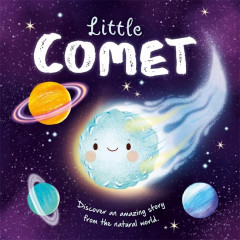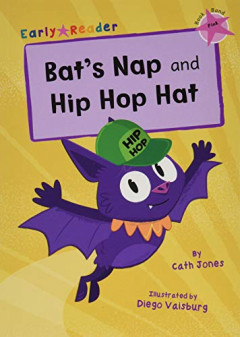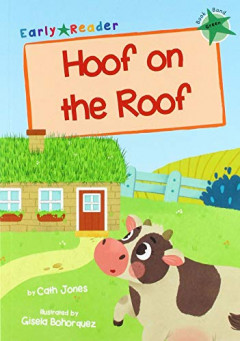Filter by

Princess Poppy: get well soon
When Grandpa gets ill Poppy can't think about anything else because she is so worried about him. She is missing him such a lot that she can't even concentrate on practicing for her gym club. Find out how Poppy helps Grandpa to get well again and whether she will be a gym princess after all.
- Edition
- -
- ISBN/ISSN
- 9780552559850
- Collation
- unpaged ; ill. ; 21 cm
- Series Title
- -
- Call Number
- F JON p

Howls Moving Castle
Sophie has the great misfortune of being the eldest of three daughters, destined to fail miserably should she ever leave home to seek her fate. But when she unwittingly attracts the ire of the Witch of the Waste, Sophie finds herself under a horrid spell that transforms her into an old lady. Her only chance at breaking it lies in the ever-moving castle in the hills: the Wizard Howl's castle. …
- Edition
- -
- ISBN/ISSN
- 9780061478789
- Collation
- -
- Series Title
- -
- Call Number
- 813.6 JON h

Look inside an airport
Peek behind the scenes at a bustling airport, as planes speed along the runway and soar into the sky. This fascinating flap book is perfect for little fingers and curious minds.
- Edition
- -
- ISBN/ISSN
- 9781409551768
- Collation
- 13 p. ; ill.
- Series Title
- Look inside
- Call Number
- 387 HON l

Howl's moving castle
‘One of the greatest ever writers for children’ – Garth Nix‘A true original’ – Katherine Rundell‘Truly magical … Guaranteed to leave you gasping’ The Bookseller‘She is the best writer of magical fantasy for children’ Evening StandardIn this beloved modern classic, young Sophie Hatter from the land of Ingary catches the unwelcome attention of the Witch of the Waste and is p…
- Edition
- -
- ISBN/ISSN
- 9780007299263
- Collation
- 301 p. ; ill. ; 20 cm
- Series Title
- -
- Call Number
- 823 JON h

Little comet
- Edition
- -
- ISBN/ISSN
- 9781801080781
- Collation
- Unpaged. ; ill. ; 25 cm
- Series Title
- -
- Call Number
- 523 JON l
- Edition
- -
- ISBN/ISSN
- 9781801080781
- Collation
- Unpaged. ; ill. ; 25 cm
- Series Title
- -
- Call Number
- 523 JON l

Too much stuff!
- Edition
- -
- ISBN/ISSN
- 9781848868335
- Collation
- 31 p. ; ill. ; 21 cm
- Series Title
- -
- Call Number
- 428 JON h
- Edition
- -
- ISBN/ISSN
- 9781848868335
- Collation
- 31 p. ; ill. ; 21 cm
- Series Title
- -
- Call Number
- 428 JON h

Hologram harry
- Edition
- -
- ISBN/ISSN
- 9781848868533
- Collation
- 31 p. ; ill. ; 21 cm
- Series Title
- -
- Call Number
- 401 JON h
- Edition
- -
- ISBN/ISSN
- 9781848868533
- Collation
- 31 p. ; ill. ; 21 cm
- Series Title
- -
- Call Number
- 401 JON h

Meg and rat and puff! puff! puff!
- Edition
- -
- ISBN/ISSN
- 9781848862869
- Collation
- 31 p. ; ill. ; 21 cm
- Series Title
- -
- Call Number
- 401 JON m
- Edition
- -
- ISBN/ISSN
- 9781848862869
- Collation
- 31 p. ; ill. ; 21 cm
- Series Title
- -
- Call Number
- 401 JON m

Bat's nap and hip hop hat
- Edition
- -
- ISBN/ISSN
- 9781848866249
- Collation
- 31 p. ; ill. ; 21 cm
- Series Title
- -
- Call Number
- 401 JON b
- Edition
- -
- ISBN/ISSN
- 9781848866249
- Collation
- 31 p. ; ill. ; 21 cm
- Series Title
- -
- Call Number
- 401 JON b

Hoof on the roof
- Edition
- -
- ISBN/ISSN
- 9781848866843
- Collation
- 31 p. ; ill. ; 21 cm
- Series Title
- -
- Call Number
- 410 JON h
- Edition
- -
- ISBN/ISSN
- 9781848866843
- Collation
- 31 p. ; ill. ; 21 cm
- Series Title
- -
- Call Number
- 410 JON h
 Computer Science, Information & General Works
Computer Science, Information & General Works  Philosophy & Psychology
Philosophy & Psychology  Religion
Religion  Social Sciences
Social Sciences  Language
Language  Pure Science
Pure Science  Applied Sciences
Applied Sciences  Art & Recreation
Art & Recreation  Literature
Literature  History & Geography
History & Geography